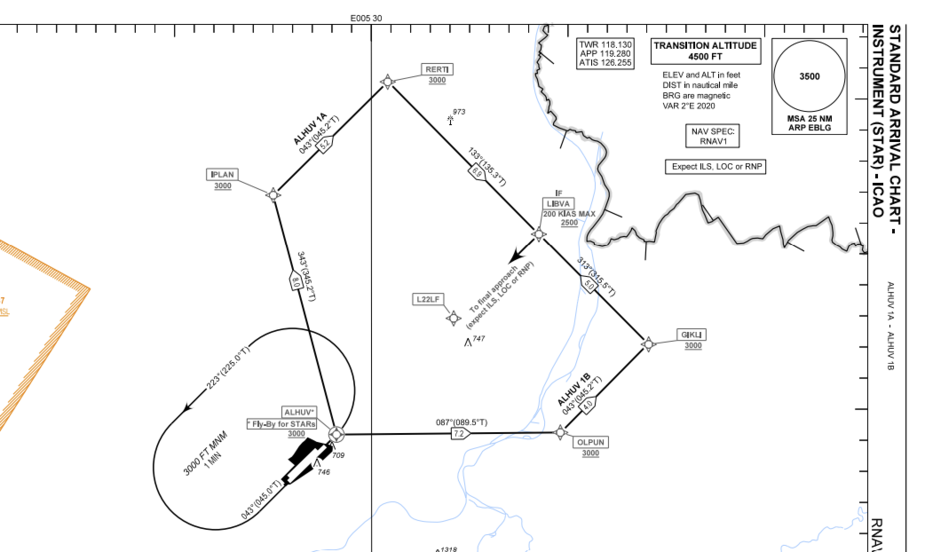Flew the EBLG transition ALHUV 1A yesterday. On selecting the Approach ILS 22L after flying the published hold over ALHUV. The Garmin lets you load the transition. I was greeted with two options from the Garmin screen. ALHUV and on the next line also ALHUV….mhmmmm.. I was thinking….let’s pick one… Luckily it was the right one going along IPLAN . There is the ALHUV 1A and the ALHUV 1B transition coming from the other direction opposite of the RWY centerline. This is confusing to say the least from Garmin to have two the same names popping up. I think, but not sure it has to do with the ARINC424 that allows only 5 characters ( I think)…Is this a typical example that there is discrepancy on what is allowed for publishing according PANS OPS hence Annex 15 and the industry standard for FMS etc..I would have thought that Garmin/ Jepp would have an agreed format for abbreviations? Or maybe a coding error…Anyone wants to share the Jepp Chart?

Vref wrote:
Anyone wants to share the Jepp Chart?
The coding should be, as per Jepp chart, “ALH1A” or “ALH1B”, with letters/numbers.

Exactly, thank you @Yeager then its a programming/data error. I checked this afternoon the ARINC 424 and it can’t handle more than 6 characters. That is one of the down sides, as discussed in the other thread when using AIP plates on SD and GP you don’t get the data packer used abbreviations.
Vref wrote:
ARINC 424 and it can’t handle more than 5 characters
Well… the bloody 70M USD G650ER I´m flying around, with a Honeywell FMS (or 3 FMS´to be more precise!), sure as hell can´t handle more than 5 characters either… ;-)
I found back the work I did on mapping ARINC424 to AIXM in 2019 ..its confidential so I can only give an extract …:-)
ARINC Definition:
“The SID/STAR Route Identifier” field contains the name of the SID or STAR, using the basic indicator, validity indicator and route indicator abbreviated to six characters with the naming rules in Chapter 7 of this document. Source/Content: SID/STAR route identifier codes should be derived from official government publications describing the terminal procedures structure
Used On: Airport SID/STAR, Heliport, SID/STAR and Flight Planning, Arrival/Departure Data Records
Length: 6 characters max
Character Type: Alpha/numeric
Examples: DEPU2, SCK4, TRP7, 41M3,
MONTH6
ARINC has elaborated a lot on how to abbreviate the SID/STAR and Approach naming. Details can be found in chapter 7.4 Naming Conventions of the ARINC specification:
The SID/STAR identifier must be limited to a maximum of 6 characters in length. Current international standards for assigning coded designators permit up to 7 characters (ICAO Annex 11, Appendix 3). These seven characters normally consist of a basic indicator, validity indicator, and, when required, a route indicator. The basic indicator names the significant point where the departure terminates, or the arrival begins. The ICAO validity indicator publicizes the current edition of the arrival or departure. This is a numeric character from one to nine
@Yeager well it doesnt matter if its 172 with a GTN or the latest greatest heavy iron its all ARINC424 version XXX
It all will be solved with the next gen :-)…and it was in Annex 11 not 15… getting old I guess
https://ieeexplore.ieee.org/document/5347485
